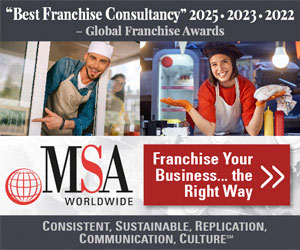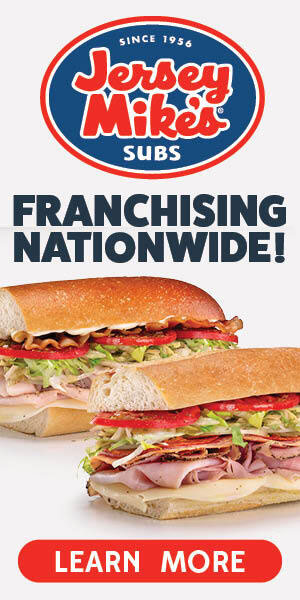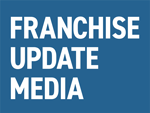Can you share some financial strategies or practices that have been instrumental in the profitability of your units?

Restaurant operators are currently facing many major financial challenges. Whether it is the increased cost of food and the impact of tariffs or the struggle to find and pay good employees, many restaurant franchisees are paying closer attention to their books and exploring options to increase their bottom line.
Franchise Update asked several multi-unit restaurant owners to share some strategies or practices that have helped increase the profitability of their units. Several people said they are closely reviewing their internal data to stay aware of the numbers and explore ways to eliminate waste and maximize efficiency. While there is little they can do to control food costs, some franchisees said they paid closer attention to managing the inventory. Others have utilized technology to optimize labor scheduling.
Some restaurant operators have explored additional revenue streams, such as catering, where available. Several people said they conduct frequent calls and communication with their team members to clearly share these strategies and goals. One franchisee cautioned that without having a solid grasp on the financial strategies that lead to unit profitability, any growth plans can be premature.
On a related note, we also asked several other multi-unit restaurant franchisees how they financially forecast for their business. They often start with the previous year’s data to project ahead to the next year. Many rely on growth numbers in areas such as comparable sales, transactions, average unit volume, and EBITDA. Others take location, weather, and the seasonality of their concept into consideration. See the Franchisee Bytes section below to learn some of the top factors in how multi-unit restaurant franchisees forecast their business.
Jake Alleman
Company: Cojak Investments, LLC
Brands: 6 Another Broken Egg Cafe
Years in Franchising: 17
Several financial practices have been instrumental in maintaining profitability. First, diligent cost management, including regular reviews of food, labor, and overhead expenses, is essential for protecting margins. Inventory management systems help minimize waste and keep food costs in check. We’ve also implemented dynamic pricing strategies that allow us to adjust prices based on demand and timing, maximizing revenue potential. Financial forecasting and closely monitoring key performance indicators (KPIs) support better planning and help identify opportunities for improvement. Efficient labor scheduling helps keep costs aligned with guest flow while maintaining service quality. Diversifying revenue streams through catering and delivery has also played a significant role in boosting profitability. Lastly, targeted marketing efforts increase guest traffic and enhance brand visibility, contributing to steady sales growth. Together, these strategies support sustainable growth and give us a competitive edge.
Matt Davis
Company: The Davis Restaurant Group
Brands: 21 Honey Baked Ham
Years in Franchising: 32
We take a very hands-on, data-driven approach to financial management. Payroll and food costs are the two areas that can make or break a store, so we monitor them closely. Payroll is reviewed daily, allowing us to make real-time adjustments to labor schedules. We also rotate staff between locations, ensuring operational consistency and managing labor costs efficiently. On the food cost side, we use software like MarginEdge to track weekly performance. If something seems off, whether it's isolated to a single store or showing up system-wide, we're able to quickly identify the issue, whether it’s waste, pricing, or vendor-related, and take immediate action. That level of vigilance is key to maintaining profitability across the board.
Robert Zufall
Company: Harts Ventures Hospitality
Brands: 7 Moe’s Southwest Grill
Years in Franchising: 16
It starts with a data-driven approach. Before we sign a lease, we evaluate catering potential, fixed costs, and labor efficiency. Internally, we’ve built a high-performing team culture grounded in accountability and recognition. We set clear goals, hold weekly calls with our GMs to ensure alignment, and reward performance through bonuses and advancement. Our two regional managers have been with us for more than 20 years. Through strategic investments in our people and systems, we have established a solid foundation that drives strong performance and operational efficiency.
Lucas Bergeson
Company: Mooyah Burgers, Fries, & Shakes of Wisconsin and Layne's Chicken Fingers of Wisconsin
Brands: 5 Mooyah Burgers, Fries & Shakes, 2 Layne’s Chicken Fingers
Years in Franchising: 10
Our strategy is all about taking care of the four walls of our restaurant by serving our guests well and getting the food out quickly while maintaining quality. My dad always says, “Sales cure all,” and I’d have to agree. While high costs of goods sold or labor costs can create challenges, we believe that driving consistent sales helps everything else fall into place. It’s about aligning the entire team around creating the best possible guest experience and supporting our employees through it all. When those two things are in sync, good things happen.
We’ve also been very deliberate with our growth. Too often, I see new franchisees who want to open multiple units right away, but if they’re not well-capitalized, that creates unnecessary risk. We took a slower, more controlled path, opening five stores over 10 years, which were mostly self-financed with minimal debt. That patience allows us to grow strategically and reinvest our earnings back into the restaurants. We also run higher labor than we strictly need, so we’re always prepared for future growth. That way, when team members are ready to step up, we have opportunities for them.
Bryan Paquin
Company: Three Alarm Subs dba Firehouse Subs
Brands: 8 Firehouse Subs
Years in Franchising: 19
Our financial strategies focus on operational efficiency and data-driven decision-making. We utilize technology for optimized scheduling and inventory management, conducting daily, weekly, and monthly inventory counts to minimize waste and variances. Point-of-sale data is analyzed to ensure inventory aligns with demand, preventing overstocking. My son B.J. and I benchmark key performance indicators across our restaurants, including food costs, labor, benefits, rent, and utilities, to identify efficiencies. Additionally, we operate a centralized commissary to streamline supply distribution, reducing clutter in individual locations. Daily morning calls with general managers review performance metrics, training progress, and service speed, fostering accountability and collaboration. Shift reports, accompanied by photos, ensure cleanliness and readiness for subsequent shifts, promoting camaraderie and setting the teams up for success.
Albert Juarez
Company: Denco of Corpus, Inc.
Brands: 5 Wienerschnitzel
Years in Franchising: 18
Our approach is rooted in simplicity and discipline. We go back to the basics: run responsibly, embrace the systems we’ve built, and constantly review our financials to make informed decisions. It all starts with putting the customer first, in every single location. From there, it’s about setting prices that allow us to deliver a great product and experience without alienating guests or compromising the business. We focus heavily on managing every dollar that comes in, ensuring strong controls are in place, and re-evaluating regularly. Trusting your people, maintaining accountability, and never losing sight of the guest experience is what allows us to remain profitable while still delivering value.
Stan Kramer
Company: North by Northwest LLC
Brands: 10 Qdoba
Years in Franchising: 16
We believe in full financial ownership at the store level. I’ve worked closely with our general managers to build a culture of accountability and empowerment. They help create the business plans and budgets for their stores and truly own the P&L. We monitor performance daily across 40 key metrics and manage to incredibly tight targets, often within one percent variances. That level of discipline drives operational excellence and profitability across our locations.
Franchisee Bytes
How do you forecast for your business?
The biggest thing we look at is year-over-year trends. We want to have more transactions and more sales than the year before. We start there and then look at any future locations we may add in the coming year. It’s not super robust, and that’s one thing we plan to improve moving forward.
-Alex Karcher, Operating Principal, JCK Restaurants, 61 Carl’s Jr., 11 Jersey Mike’s Subs, 8 The Human Bean, 8 Dave’s Hot Chicken, 1 Hawaiian Bros Island Grill
We use last year’s data to plan along with local events throughout the year and the weather. There is a seasonal ebb and flow to our business. We know cold and rainy weather will negatively impact sales, and the better weather of spring and summer will bring additional customers. Graduations and other area events also increase sales.
-Carrie Ayers, Owner/Operator, 6 Playa Bowls
One of our core success elements is strategically booking our trucks based on historical performance and ongoing market insights. While we follow proven patterns, we tailor our approach to the unique dynamics of each territory and prioritize booking our trucks far in advance. Weekly projections are developed in advance, evaluating the potential of upcoming vending locations. I also meet with our booking team two weeks ahead to align our strategy and ensure optimal execution.
-Yunus Shahul, Franchise Owner, Smartfoods Group, 24 Cousins Maine Lobster, 1 German Doner Kebab
We complete comprehensive forecasting and business modeling for all our businesses. This is done throughout the year, preparing for each year ahead, and the process usually takes about four to six months. We focus on sales trends, seasonality, cost control, automation, comp sales growth, transaction growth, AUV growth, and EBITDA growth.
-Nick Crouch, Co-CEO, Dyne Hospitality Group, 118 Tropical Smoothie Café
General historical data mixed with what the economy is doing. We use some of our other concepts’ numbers as data points. We look at the cost of commodities and potential minimum wage increases.
-Chad Given, Brand President, Sizzling Platter, 361 Little Caesars, 107 Little Caesars Mexico, 185 Wingstop, 92 Jamba, 33 Jersey Mike’s Subs, 31 Dunkin’, 7 Sizzler, 5 Red Robin, 1 Cinnabon
We take a multi-step approach to forecasting. First, we review historical data from the same period last year. Then, we adjust for factors, like local events or weather, that could influence sales. We also look at trends from the past few months to identify patterns. Finally, we benchmark our performance against comparable markets to set realistic yet ambitious goals.
-Jacob Webb, Franchise Owner, MPUT Holdings LLC, 22 Marco's Pizza, 4 Tropical Smoothie Cafe
Share this Feature
Recommended Reading:
| ADVERTISE | SPONSORED CONTENT |
FRANCHISE TOPICS
- Multi-Unit Franchising
- Get Started in Franchising
- Franchise Growth
- Franchise Operations
- Open New Units
- Franchise Leadership
- Franchise Marketing
- Technology
- Franchise Law
- Franchise Awards
- Franchise Rankings
- Franchise Trends
- Franchise Development
- Featured Franchise Stories
| ADVERTISE | SPONSORED CONTENT |

$200,000
$50,000





 The multi-unit franchise opportunities listed above are not related to or endorsed by Multi-Unit Franchisee or Franchise Update Media Group. We are not engaged in, supporting, or endorsing any specific franchise, business opportunity, company or individual. No statement in this site is to be construed as a recommendation. We encourage prospective franchise buyers to perform extensive due diligence when considering a franchise opportunity.
The multi-unit franchise opportunities listed above are not related to or endorsed by Multi-Unit Franchisee or Franchise Update Media Group. We are not engaged in, supporting, or endorsing any specific franchise, business opportunity, company or individual. No statement in this site is to be construed as a recommendation. We encourage prospective franchise buyers to perform extensive due diligence when considering a franchise opportunity.